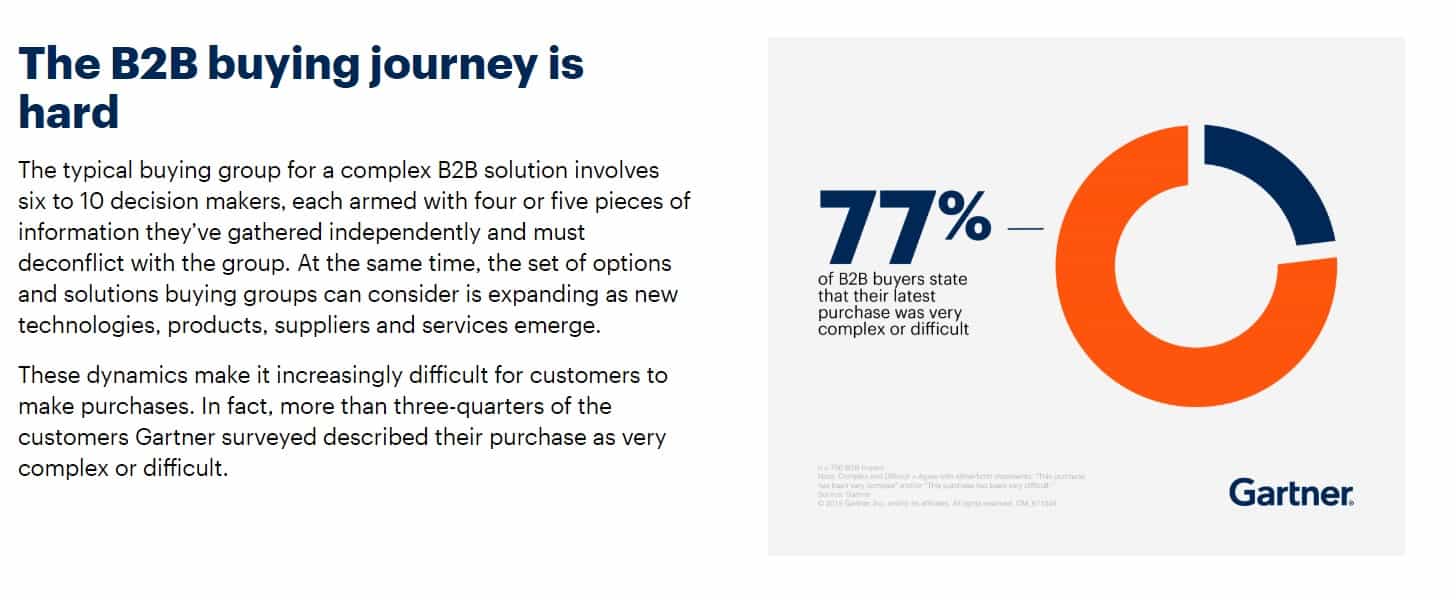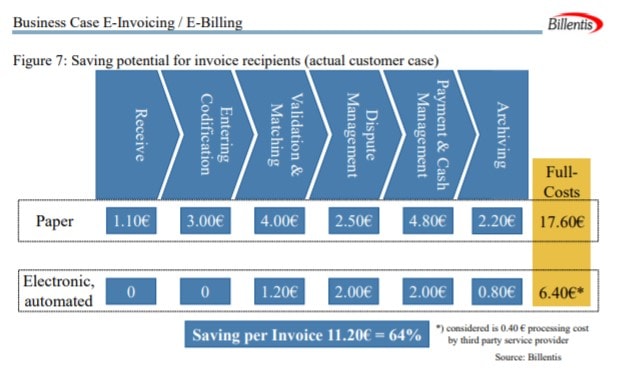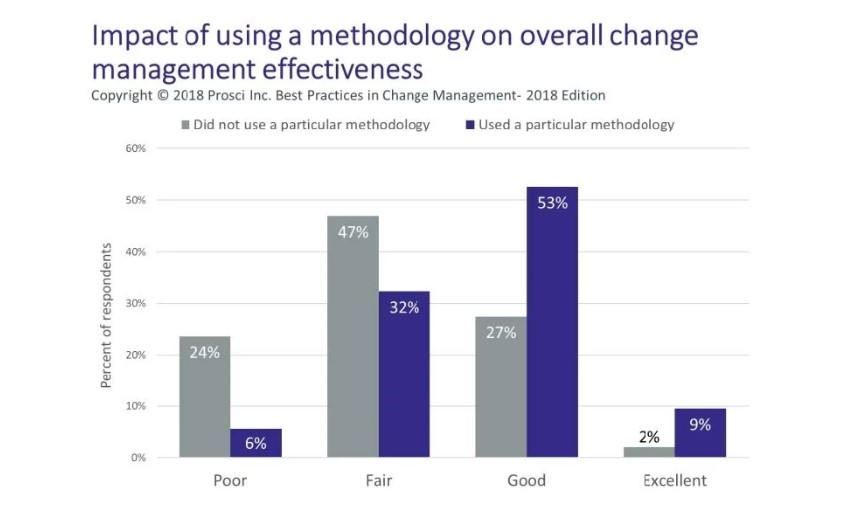- Blog
- 7 Steps and 14 Resources to Help you Select an e-invoicing Solution
7 Steps and 14 Resources to Help you Select an e-invoicing Solution
There are many misconceptions about buying accounts payable (AP) software: everything from how personal a company-wide buying decision really is, to where to get started and when to get end users involved. In this blog post, we bust some AP automation software myths, suggest 7 steps to success, and recommend 14 helpful resources to help you on your journey.
1. Remember: business decision making isn’t personal
Making any enterprise-wide purchase is fraught with challenges. But until research from the CEB revealed the very human nature of B2B buying, companies assumed that business buying was somehow different… almost impersonal. But if you think that stakeholders involved in a purchase decision are acting rationally, think again.
CEB’s research revealed that “B2B buying is highly personal—even more so than B2C buying—due to the level of personal risk buyers feel.”
In theory, buying progresses along a linear journey. In reality, it doesn’t. Gone are the days when awareness was followed by interest, desire, and action. Today, Gartner’s numbers indicate that B2B buyers are spending 27% of their time researching independently online and that 77% of them say their latest purchase was very complex or difficult. So, if you feel like making a decision about which e-invoicing or Accounts Payable (AP) software to buy is complicated and challenging, you’re not alone!
2. Today, ‘doing nothing’ is no longer an option
The world has changed irreversibly. Since working from home is now the new normal (and will continue to be for the foreseeable future) it’s hardly surprising that, according to a survey by TrustRadius, 40% of software buyers are expecting to spend more.
Understandably, spend is increasing most significantly on software for telemedicine, e-signatures and web conferencing. However, any process that has previously depended on workers having to be office-based will have to adapt, including accounts payable and e-invoicing.
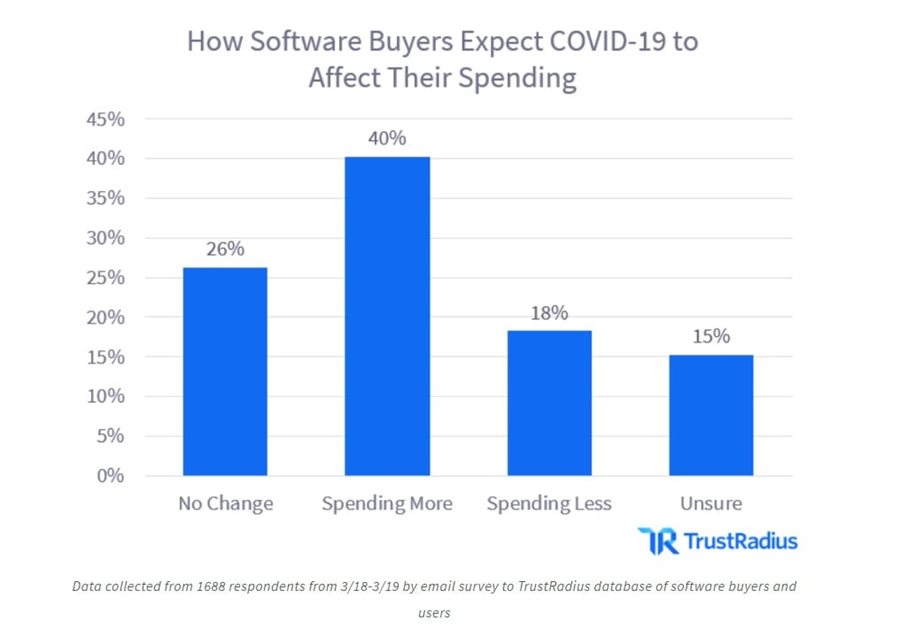
As we explain in this blog post: doing nothing is no longer an option. Today giving in to this four-letter word (F*E*A*R) isn’t just inhibiting progress. If a lack of visibility is preventing intelligent decision-making at a critical time like this, not having access to the right software may very well make the difference between a company’s long-term survival and its very existence.
3. Where to get started? Find out how much you’re spending on invoice processing
Do you know your current costs for processing an incoming invoice? It may very well be higher than you think. This report by Billentis provides a good overview of the average (fully-loaded) costs for the paper-based processing of invoices.
There is also an environmental cost to paper invoicing. As we cover in this blog post about how purchase to pay contributes to sustainability, organisations can begin taking concrete steps towards reducing their carbon footprints by huge amounts when the combine the powers of technology and automation.
4. Look beyond your ERP
If you’re looking to implement a solution for automated invoice processing, you need to take into consideration your legacy ERP system(s) as well as where your master data, purchase order, and billing data is stored. Invoice automation raises the question of whether to choose a solution that is tied to the existing ERP system, or whether a best-of-breed, ERP-independent solution is the better option.
This blog post about why it pays to think beyond your ERP system lists several benefits of an ERP alternative, including: greater flexibility, user-friendly interfaces, ‘true’ automation, centralised invoice capture, and standardised billing, and enterprise-wide data that enables both transparency and control.
In addition, these three reasons you shouldn’t use your ERP system for purchase-to-pay are also compelling.
5. Get people on board and excited
Once the hard work of choosing a software solution is completed, then comes the even harder part of getting people on board. Or should that process begin sooner? In fact, research suggests that change management is more effective when a methodology is applied right from the beginning.
Since employee participation, open communication and the engagement of middle managers are all key to software success, it is only logical to ensure that whomever you choose as a software provider must be able to communicate clearly and demonstrate sufficient change management knowledge and experience.
6. Celebrate success
Whether you are updating your AP processes in a single location or around the world, like DHL did as part of a global purchase-to-pay rollout, it’s important to recognise the contributions of those involved and to take the time to look back, reflect on the effort involved, and see how far you have come once the project is over. Creating an internal case study or producing one with the software vendor you’ve worked with is an excellent way to consolidate the hard and soft benefits of a software rollout but, more importantly, it gives people involved in the project a chance to reflect on their success.
7. Gather the data and benchmark your current performance
It is important to remember that it’s far easier to demonstrate (and therefore celebrate) success if you are able to take a ‘snapshot’ or a more formal reflection of the status quo at the beginning of a project. So, regardless of where you are in the research or buying process, take the time to do an accurate, and honest, assessment of what ‘business as usual’ looks like today.
Even if you have to guess about some of the metrics it’s worth benchmarking your current processes against best-in-class. Here are two resources that could help: a white paper by PayStream Advisors about Benchmarking Procure-to-Pay Transformation and our factsheet about Purchase-to-Pay Performance which includes performance areas, metrics and how efficient, aligned, and agile companies compare.
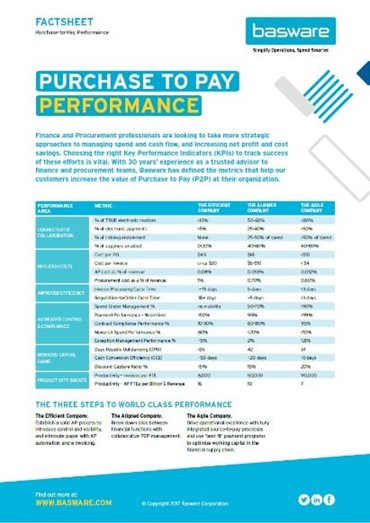
Conclusion
Any buying decision can, and should, take time. But extraordinary times call for extraordinary measures and making decisions quickly, decisively, and emphatically – knowing that the risk may be great, but the risk of doing nothing may be even greater – is the true measure of an advanced team. These are not normal times, so there is no sense in carrying on with ‘business as usual.’ Instead, why not use the circumstances as impetus to embrace openness, innovation and intelligent analytics by starting with accounts payable or e-invoicing automation. You won’t look back.
What’s next?
What should you do next? Get in touch with us to arrange a free consultation and process review. We’ll be happy to talk about how we’ve helped other companies like yours automate their invoicing processes, either as part of a complete purchase-to-pay automation journey or in isolation.
Related
-
By Basware RepresentativeThe route to logistics software harmony for finance, AP and procurement
-
By Katarzyna FonteynA Reflection on the State of Procurement
-
By Katarzyna FonteynHow to create procurement visibility from day 1
-
By Basware RepresentativeDon’t Delay Digital Procurement & Finance Investments
-
By Ann StrömbergNordic Leaders Circle focused on procurement development
-
By Katie ColbourneProcure-to-Pay Trends Predictions and Advancements for 2022 and Beyond
-
By Basware RepresentativeBasware to Help Expand e-Invoicing with the Business Payment Coalition
-
By Ann StrömbergProcurement Collaboration, Resilience, Technology, and Sustainability



